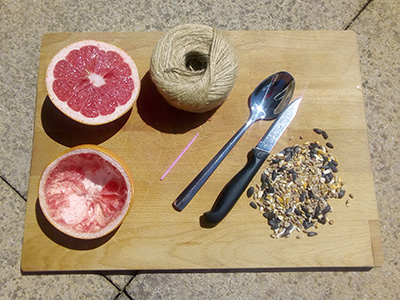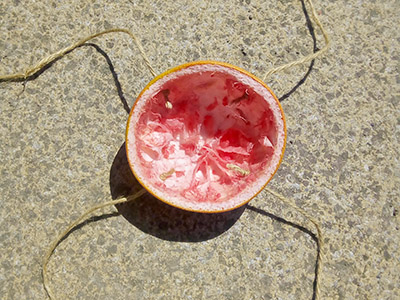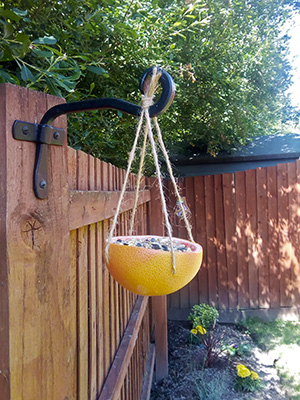Citrus Bird Feeder
If you're looking for a simple, low cost, biodegradable bird feeder, look no further than your fruit bowl to make this easy citrus cup. It’s quick to make and is suitable for all ages and experience levels. It’s sure to add a splash of colour to your bird feeding stations and knowing how to turn a citrus fruit into a functional bird feeder, means you’ll never let a rind go to waste again.
You will need:
- Citrus fruit, like a grapefruit or large orange
- Knife or spoon
- String
- Scissors
- Birdseed
- A plastic needle
Step 1
Cut your citrus fruit in half.
Step 2
Remove the inside of the fruit. For grapefruit and oranges, I personally just eat it from here. If I use lemons or limes, I squeeze all of the juice out and then with my spoon or knife, carefully remove the inside.
Step 3
Cut four 25 cm long pieces of string for each half piece of fruit. Then tie a knot at the end and thread your plastic needle.
Step 4
Poke your needle through the side of your peel. Make sure you go at least 1/3 of the way down from the top of the peel. If you poke too close to the top, the weight of the bird (or squirrel, let's be honest with ourselves) will break the peel and your feeder will fall. If you don't have a plastic needle, you can always use the tip of your knife to poke a hole into the side of the peel. Do this on four sides of the peel.

Step 5
Tie all four of the strings together in a knot. This is where you'll hang your feeder from a branch.
Step 6
e a tree in your garden. Pour your birdseed inside your citrus cup. I found that it was better to hang the bird feeder on the tree first and then pour in the birdseed.
Ta dah, these bird feeders will make a colourful and sunny addition to your garden and the birds will love you too!
Can you name the birds that come and use your bird feeder? If you need a little help identifying them have a look here at the Devon Wildlife Trust website.
Aftercare tips:
Check the feeders daily for signs of decay or rotting. A thicker rind will last longer, and in cooler weather these feeders should last a week or more.
When the feeder does soften and decay beyond being usable, add it to a compost pile or otherwise put in your food recycling caddy.
